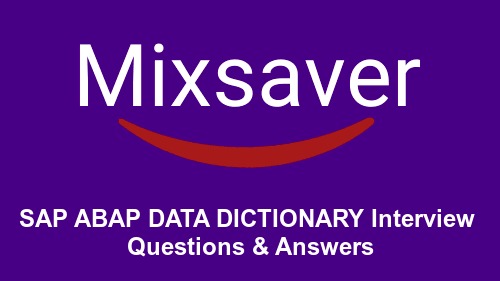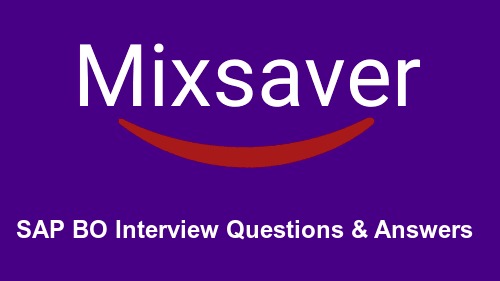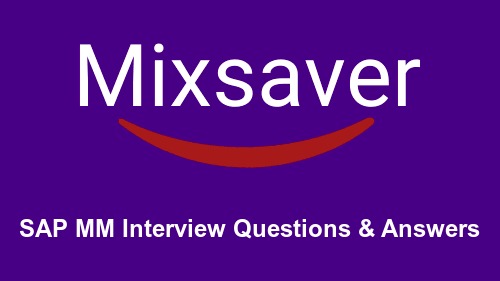1. How do I change the name of master / parent role keeping the name of derived/child role same? I would like to keep the name of derived /child role same and also the profile associated with the child roles.
A. First copy the master role using PFCG to a role with new name you wish to have. Then you have to generate the role. Now open each derived role and delete the menu. Once the menus are removed it will let you put new inheritance. You can put the name of the new master role you created. This will help you keep the same derived role name and also the same profile name. Once the new roles are done you can transport it. The transport automatically includes the Parent roles.
2. What is the difference between C (Check) and U (Unmaintained)?
A. Background:
When defining authorizations using Profile Generator, the table USOBX_C defines which authorization checks should occur within a transaction and which authorization checks should be maintained in the PG. You determine the authorization checks that can be maintained in the PG using Check Indicators. It is a Check Table for Table USOBT_C. In USOBX_C there are 4 Check Indicators.
· CM (Check/Maintain)
- An authority check is carried out against this object.
- The PG creates an authorization for this object and field values are displayed for changing.
- Default values for this authorization can be maintained.
· C (Check)
- An authority check is carried out against this object.
- The PG does not create an authorization for this object, so field values are not displayed.
- No default values can be maintained for this authorization.
· N (No check)
- The authority check against this object is disabled.
- The PG does not create an authorization for this object, so field values are not displayed.
- No default values can be maintained for this authorization.
·U (Unmaintained)
- No check indicator is set.
- An authority check is always carried out against this object.
- The PG does not create an authorization for this object, so field values are not displayed.
- No default values can be maintained for this authorization..
3. What does user compare do?
A. Comparing the user master: This is basically updating profile information into user master record.
So that users are allowed to execute the transactions contained in the menu tree of their roles, their user master record must contain the profile for the corresponding roles.
You can start the user compare process from within the Profile Generator (User tab and User compare pushbutton). As a result of the comparison, the profile generated by the Profile Generator is entered into the user master record. Never enter generated profiles directly into the user master record (using transaction SU01, for example)! During the automatic user compare process (with report pfcg_time_dependency, for example), generated profiles are removed from the user masters if they do
not belong to the roles that are assigned to the user.
If you assign roles to users for a limited period of time only, you must perform a comparison at the beginning and at the end of the validity period. You are recommended to schedule the background job pfcg_time_dependency in such cases
4. Can wildcards be used in authorizations?
A. Authorization values may contain wildcards; however, the system ignores everything after the wildcard. Therefore, A*B is the same as A*.
5. What does the PFCG_TIME_DEPENDENCY clean up?
A. The 'PFCG_TIME_DEPENDENCY' background report only cleans up the profiles (that is, it does not clean up the roles in the system). Alternatively, you may use transaction 'PFUD'.
6. What happens to change documents when they are transported to the production system?
A. Change documents cannot be displayed in transaction 'SUIM' after they are transported to the production system because we do not have the 'befor input' method for the transport. This means that if changes are made, the 'USR10' table is filled with the current values and writes the old values to the 'USH10' table beforehand. The difference between both tables is then calculated and the value for the change documents is determined as a result. However, this does not work when change documents are transported to the production system. The 'USR10' table is automatically filled with the current values for the transport and there is no option for filling the 'USH10' table in advance (for the history) because we do not have a 'befor input' method to fill the 'USH10' table in advance for the transport.
7. What is the difference between the table buffer and the user buffer?
A. The table buffers are in the shared memory. Buffering the tables increases performance when accessing the data records contained in the table. Table buffers and table entries are ignored during startup. A user buffer is a buffer from which the data of a user master record is loaded when the user logs on. The user buffer has different setting options with regard to the 'auth/new_buffering' parameter.
8. What does the Profile Generator do?
A. The Profile Generator creates roles. It is important that suitable user roles, and not profiles, are entered manually in transaction 'SU01'. The system should enter the profiles for this user automatically.
9. How many authorizations fit into a profile?
A. A maximum of 150 authorization fit into a profile. If the number of authorizations exceed this marker, the Profile Generator will automatically create more profiles for the role. A profile name consists of twelve (12) characters and the first ten (10) may be changed when generated for the first time.
10. How we Schedule and administering Background jobs?
scheduling and administrating of background jobs can be done by using tcodes sm36 and sm37
11.Please explain the personalization tab within a role.
Personalization is a way to save information that could be common to users, I meant to a user role... E.g. you can create SAP queries and manage authorizations by user groups. Now this information can be stored in the personalization tab of the role. (I supposed that it is a way for SAP to address his ambiguity of its concept of user group and roles: is "usergroup" a grouping of people sharing the same access or is it the role who is the grouping of people sharing the same access)
12.Is there a table for authorizations where I can quickly see the values entered in a group of fields?
In particular I am looking to find the field values for P_ORGIN across a number of authorization profiles, without having to drill down on each profile and authorization.
AGR_1251 will give you some reasonable info.
13.How can I do a mass delete of the roles without deleting the new roles ?
There is a SAP delivered report that you can copy, remove the system type check and run. To do a landscape with delete, enter the roles to be deleted in a transport, run the delete program or manually delete and then release the transport and import them into all clients and systems.
It is called: AGR_DELETE_ALL_ACTIVITY_GROUPS.
To used it, you need to tweak/debug & replace the code as it has a check that ensure it is deleting SAP delivered roles only. Once you get past that little bit, it works well.
14.Someone has deleted users in our system, and I am eager to find out who. Is there a table where this is logged?
Debug or use RSUSR100 to find the info's.
Run transaction SUIM and down its Change documents.
15.How to insert missing authorization?
su53 is the best transaction with which we can find the missing authorizations.and we can insert those missing authorization through pfcg.
16.What is the difference between role and a profile?
Role and profile go hand in hand. Profile is bought in by a role. Role is used as a template, where you can add T-codes, reports..Profile is one which gives the user authorization. When you create a role, a profile is automatically created.
17.What profile versions?
Profile versions are nothing but when u modifies a profile parameter through a RZ10 and generates a new profile is created with a different version and it is stored in the database.
18.What is the use of role templates?
User role templates are predefined activity groups in SAP consisting of transactions, reports and web addresses.
19.What is the different between single role & composite role?
A role is a container that collects the transaction and generates the associated profile. A composite roles is a container which can collect several different roles
20.Is it possible to change role template? How?
Yes, we can change a user role template. There are exactly three ways in which we can work with user role templates
- we can use it as they are delivered in sap
- we can modify them as per our needs through pfcg
- we can create them from scratch.
For all the above specified we have to use pfcg transaction to maintain them.





